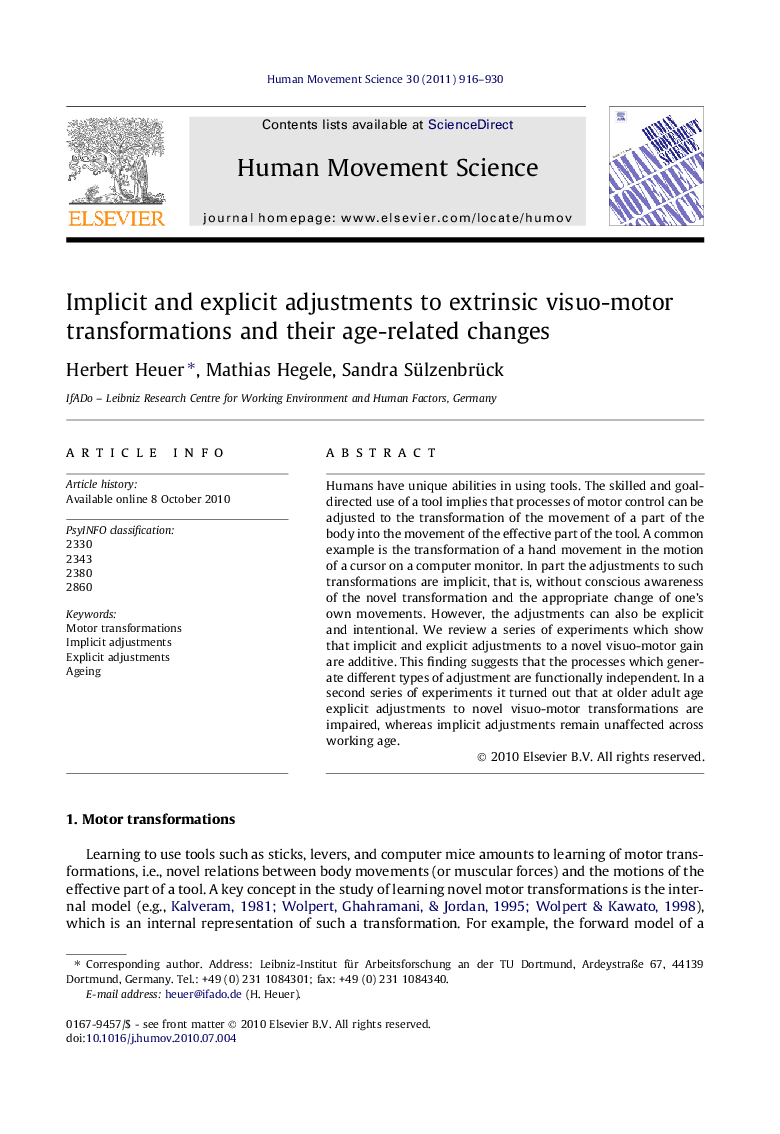| Article ID | Journal | Published Year | Pages | File Type |
|---|---|---|---|---|
| 928609 | Human Movement Science | 2011 | 15 Pages |
Humans have unique abilities in using tools. The skilled and goal-directed use of a tool implies that processes of motor control can be adjusted to the transformation of the movement of a part of the body into the movement of the effective part of the tool. A common example is the transformation of a hand movement in the motion of a cursor on a computer monitor. In part the adjustments to such transformations are implicit, that is, without conscious awareness of the novel transformation and the appropriate change of one’s own movements. However, the adjustments can also be explicit and intentional. We review a series of experiments which show that implicit and explicit adjustments to a novel visuo-motor gain are additive. This finding suggests that the processes which generate different types of adjustment are functionally independent. In a second series of experiments it turned out that at older adult age explicit adjustments to novel visuo-motor transformations are impaired, whereas implicit adjustments remain unaffected across working age.
